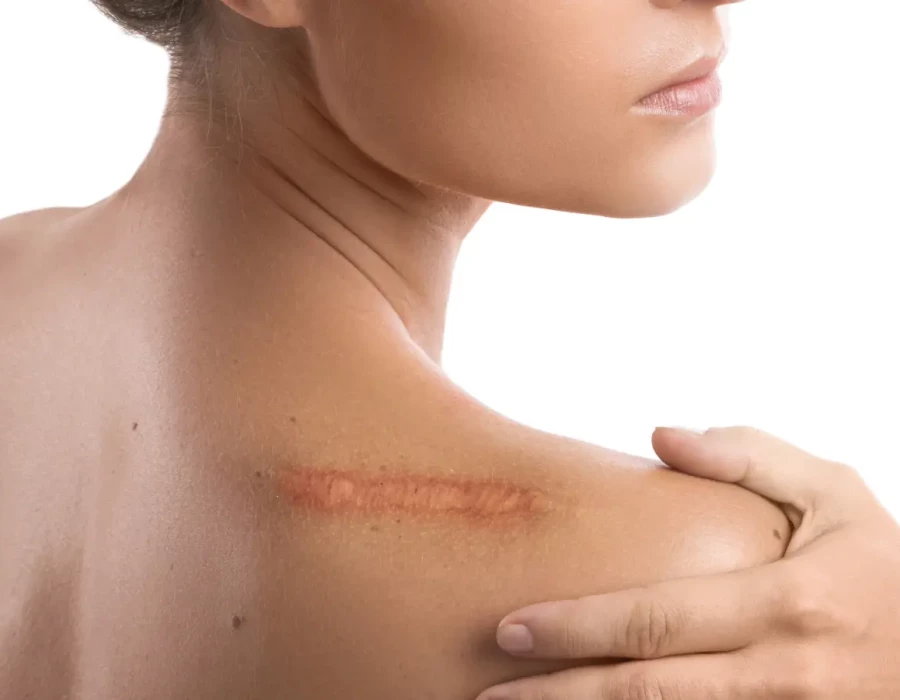Our skin.

Did you know? The skin is the largest and one of the most important organs the human body has. The skin forms a protective barrier between the external environment and the internal organs.
Skin is strong, protective, powerful and it can heal itself.
Speaking of healing itself – even if our skin is strong, our skin can still be damaged by common everyday injuries such as; grazes, cuts, burns and sunburns. Any damage leading to a break in the continuity of the skin can be called a wound. An open wound accelerates the formation of new skin, in order to close the damaged skin as quickly as possible. The faster the skin heals, the less chance there is of developing scarring.
The anatomy of our skin

Three important parts of our skin:
-
Epidermis
The epidermis is the outermost of three layers that make up the skin. The epidermis is composed of several thin layers that consist of melanocytes and keratinocytes. Melanocytes produce melanin, a pigment that gives skin its colour and protects it from the damaging effects of ultraviolet radiation. Keratinocytes produce keratin, a water repellent protein that gives the epidermis its tough and protective quality. Our intact skin formats a barrier against environmental damage like heat, UV radiation and water loss.
-
Dermis
The dermis is composed of a thick layer of skin that contains collagen, connective tissue, fibers, blood vessels, sweat and hair follicles.
-
Subcutaneous Tissue (Hypodermis)
The deeper hypodermis is made of fat and connective tissue.
Check your wound knowledge. Take our quiz!
Correct! If a scab appears, it means that the wound is poorly hydrated and will need more time to heal.
Unfortunately, incorrect. If a scab appears, it means that the wound is poorly hydrated and will need more time to heal.
Correct! In most cases, microbes found on a wound come from the patient himself and not from the outside air.
Unfortunately, incorrect. In most cases, microbes found on a wound come from the patient himself and not from the outside air.
Correct! According to the current recommendations, it is sufficient to clean non-infected wounds with clean water or/and sterile saline cleanser. Only use antiseptics if the wound is infected.
Unfortunately, incorrect. According to the current recommendations, it is sufficient to clean non-infected wounds with clean water or/and sterile saline cleanser. Only use antiseptics if the wound is infected.
Correct! Very cold or even ice-cold water can make the injury worse. Lukewarm water is sufficient to relieve the pain and stop the burn from spreading.
Unfortunately, incorrect. Very cold or even ice-cold water can make the injury worse. Lukewarm water is sufficient to relieve the pain and stop the burn from spreading.
Correct! Hydrogen peroxide is not disinfecting or antiseptic and therefore not appropriate for wound treatment.
Unfortunately, incorrect. Hydrogen peroxide is not disinfecting or antiseptic and therefore not appropriate for wound treatment.
Correct! When a wound starts to itch, this is a sign of healing. However, if you feel a knocking sensation, this may indicate an infection and it is best to consult a doctor.
Unfortunately, incorrect. When a wound starts to itch, this is a sign of healing. However, if you feel a knocking sensation, this may indicate an infection and it is best to consult a doctor.
You have answered {answeredcorrectlytext} questions correctly.
Try again and start the test from the beginning or learn more about your skin here
You are already well informed and you know the necessary tips and tricks when it comes to the care of different types of wounds. But there is always room for improvement, learn more about wound wound care here